Pakistani invasion of Jammu and Kashmir in 1947 and India to the rescue
31 Oct 2023 15:37:47
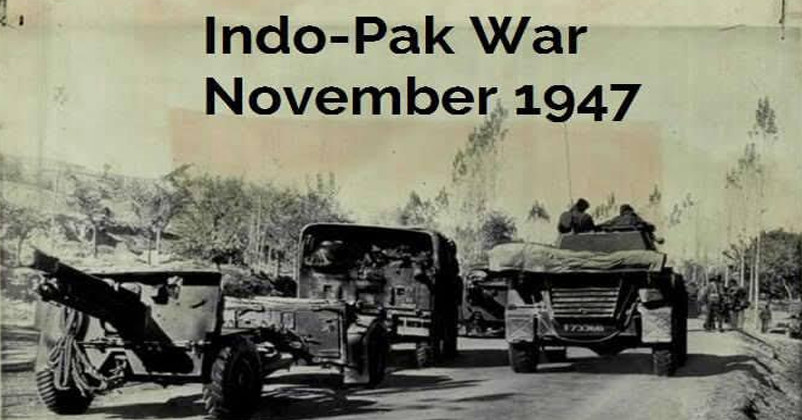
The India-Pakistan war of 1947-1948, often referred to as the First Jammu & Kashmir War, began in October 1947 when tribal militias and Pakistani forces invaded the princely state of Jammu and Kashmir. This war occurred shortly after India and Pakistan gained independence from British rule.
In response to the invasion, the Maharaja of Jammu and Kashmir, Hari Singh, sought assistance from India. He signed the Instrument of Accession to India, and Indian troops were airlifted to Kashmir on October 27, 1947 to repel the invaders. This marked the beginning of the first India-Pakistan war over Kashmir.
India to the rescue:
Internal Politics : Since the lapse of Paramountcy on 15 August 1947, a crisis had been brewing in the State of Jammu and Kashmir all too plainly. The mounting fever of communal frenzy all around the State and the constitutional uncertainty about the future naturally produced a curious psychosis in the minds of people. Passions were inflamed and wildest rumours were current. Faced with this unprecedented situation the Maharaja was bewildered. It was with considerable reluctance that he agreed even to release Sheikh Abdullah from prison about the end of September But Sheikh Abdullah was given no official authority, in spite of the friendly advice of Nehru. The Maharaja vacillated, and his Prime Minister, Mahajan, declared about the troubles in Poonch, "I am sure that Dogra troops will be able to abet (sic) the military operations of the raiders and will smother them within a week " But unfortunately thousands were to die and many towns ravaged before the State authorities realised their mistake.
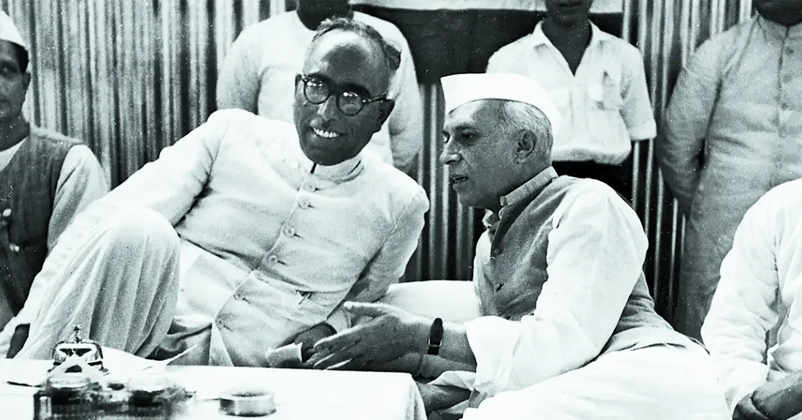
The Government of India, headed by Jawaharlal Nehru, pressed the Maharaja to hand over effective power to Sheikh Abdullah who had been released. The attitude of Pakistan had to be ascertained, for in the past Jinnah and the Muslim League had always supported the ruler against his people, and had recently declared that decision about a state's accession could only be made by its ruler. To sound the Pakistan government and to explain the stand of the National Conference, Ghulam Mohammad Sadiq was sent to Lahore. He met the Prime Minister of Pakistan and several ministers of the West Punjab government, but the negotiations resulted in no agreement. Sadiq went to Pakistan a-second time in the third week of October, but, while he was talking to the Muslim League leaders and trying to reach a compromise, Pakistan launched its invasion of Kashmir. Within a few days of the beginning of the invasion, the civil administration at Srinagar totally collapsed.
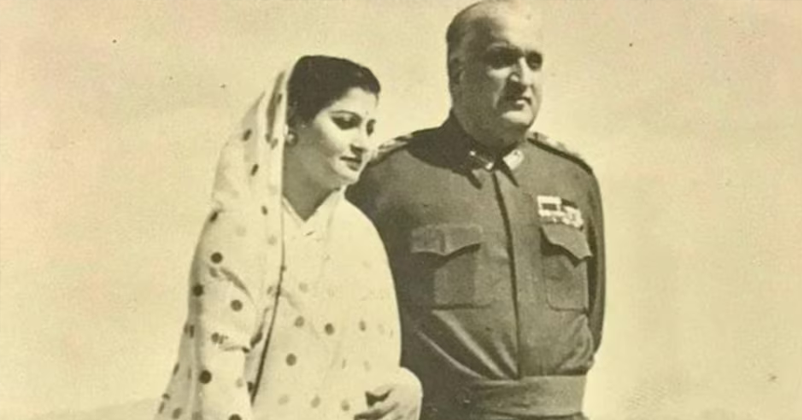
On 25 October, the Maharaja left Srinagar for Jammu which was the winter capital of the State. The Prime Minister was also away. The subordinate officials, the police chiefs and public servants, all left their jobs and looked anxiously to the safety of themselves and their families. As the raiders approached nearer and nearer, panic took hold of the city Shops were shuttered and bolted and the occasional pedestrian hurried on his way with an unnamed fear in his heart. The hour was approaching for anti-social elements to rise and take charge of the city, with all the attendant looting and killings but the National Conference rose to the occasion. The National Conference Peace Brigade, which had been recently organised to fight communalism, was transformed into the National Militia to defend Srinagar against the raiders. The volunteers armed themselves with everything and anything they could manage to get. A few had 303 rifles, others shouldered ancient shot-guns, while even hockey-sticks were not despised. Fortunately, these arms were not actually required to be used against the raiders. But the effect of these bands of volunteers marching down the cobbled streets and singing patriotic songs was most heartening. Morale rose with a jump, The shops were reopened and normal life returned.
Accession to India
By the latter half of October 1947, the Government of India was in close touch with the situation in Kashmir The Maharaja's government also informed the Government of India of the worsening situation within the State and sought help in controlling it. Direct assistance of the Indian Army was out of the question till Jammu and Kashmir had acceded to India, but before any help could actually be sent, the tribesmen had invaded Kashmir, changing entirely the complexion of affairs.
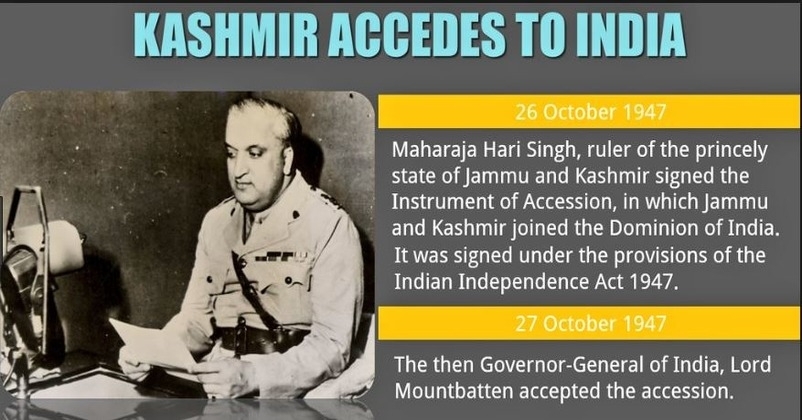
It was only on 24 October that the Government of India got the first news of the invasion of Kashmir. A message was received from Pakistan Army Headquarters that day, informing the Supreme Commander that "Tribesmen estimated 5,000 Afridis, Wazirs, Mahsuds, Swatis attacked Muzaffarabad and Domel capturing both on 22 October. Tribesmen reported approaching Srinagar, Kohala in danger of being attacked. Tribesmen in large numbers expected to go Kashmir . Then, at 1 pm the same night, an urgent request was received from Maharaja Hari Singh, specifically asking for Indian troops to be sent to Kashmir to save it from the invaders. The S O S of the Kashmir government was considered in Defence Committee of the Cabinet on 25 October But the difficulties of the undertaking were all too obvious. No plan had ever been made for sending Indian troops to Kashmir. Srinagar was over 480 km from the nearest point of the Indian border. Troops in the East Punjab were fully engaged in rescuing refugees and maintaining law and order. There was no time to lose, for the way to Srinagar lay open to the raiders, with only a handful of State troops to push aside. Air transport of the troops was the only way out, but that presented unprecedented problems. The Srinagar landing ground, situated at the altitude of 1524 metres, fell far short of international standards, and was not even regularly maintained. Landing large, fully-laden transport planes on this airstrip would be in itself a feat. The troops would then find themselves stranded in a distant valley with no depots, ancillary services or regular line of communication . They would be entirely dependent on the uncertain air transport for all their multifarious needs, and faced with an enemy, about whom they had little information.To assess the situation, VP Menon (Secretary, Ministry of States, Government of India) was flown to Srinagar on 25 October. He found the city plunged in gloom and expecting the raiders' arrival any time. On his advice, the Maharaja of Jammu and Kashmir left Srinagar for Jammu late that night, to escape from being captured by the raiders who could then extract from him whatever they wanted. Menon returned from Srinagar in the morning of 26 October, accompanied by M.C. Mahajan, the Prime Minister of Jammu and Kashmir. The Defence Committee of Cabinet discussed the situation and the urgent pleas of the State government and the popular leader Sheikh Abdullah for immediate military assistance to halt the raiders. It was decided that Indian troops would be sent to the State only after its formal accession to India. VP Menon flew to Jammu that afternoon and immediately returned with the formal Instrument of Accession signed by the Maharaja.^With the acceptance of this legal document by the Governor-General of India on the evening of 26 October 1947, the State of Jammu and Kashmir became an integral part of the Indian Dominion, legally, morally and constitutionally. Once the State of Jammu and Kashmir had acceded to India, Pakistan as a friendly neighbouring state should have stopped the invasion of J&K but instead of doing that she continued to provide the invaders all possible help. Khan Abdul Qayyum Khan, the Chief Minister of North West Frontier Province, declared that the Pathans were determined to die to the last man for Kashmir, which as a Muslim majority state belonged to Pakistan as a matter of right.
The same attitude was taken by Jinnah himself when the Governor-General of Pakistan came to know of the despatch of Indian troops to Srinagar on 27 October, he became furious. That night he sent instructions to Gen Sir Douglas Gracey, the acting Commander-In- Chief of the Pakistan Army (Gen Messervy, the C-in-C, was away on leave) to move the Pakistan Army into Kashmir to seize Baramula, Srinagar and the Banihal Pass as well as to move into Mirpur district of Jammu. However, Gen Gracey replied that he could not take such action without consulting the Supreme Commander, Field Marshal Auchinleck. Next morning, the Field Marshal came to Lahore to explain to Jinnah that in view of the accession of Jammu and Kashmir to India, the despatch of Indian troops to Srinagar was perfectly legal, and if the Governor-General of Pakistan insisted on sending his army to Jammu and Kashmir, all British army officers and men serving in the Pakistan Army would have to be pulled out at once. Consequently, Jinnah had to climb down and cancel his orders.
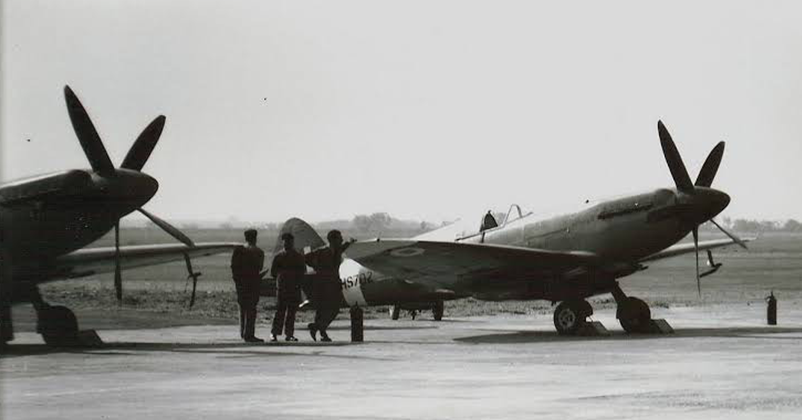
The First Fly in
Though on 26 October Kashmir became a part of India in law, it was most urgent that its invaders were thrown back. This meant that regular Indian troops must be sent there with the utmost speed. In the Army HQ, Brig Kalwant Singh, the acting CGS, took urgent steps to find and prepare the troops to be sent to Srinagar. The choice fell on 1Sikh then stationed near Gurgaon and commanded by Lieut- Colonel Dewan Ranjit Rai. The Operation Instruction issued to him informed him that the State of Jammu and Kashmir had acceded to India but was being invaded by tribesmen from Pakistan. To save the State from the invaders, one battalion was to be flown immediately to Srinagar, and later, in what was described as Phase Il of the Operation, a Brigade Group would be moved to Jammu Lieut-Colonel Rai's task was to fly to Srinagar early on the 27th morning with the troops allotted to him and to secure the aerodrome and civil aviation wireless station there. Then, if possible, he was to drive away the enemy from the neighbourhood of Srinagar and aid the local government in maintaining law and order.
So uncertain was the situation in the Valley that Lieut-Colonel Rai was instructed to circle the Srinagar airfield and carefully scan the countryside in case the raiders had already occupied It. If so, he was to fly back and land with his men at Jammu. Such a rider
to an Operation Instruction must surely be unique in modern military history, and was an indication of the unique uncertainty, hazards and difficulties facing the Indian troops when they went to Kashmir.
The First Flight
After an uneventful flight, the Dakota carrying Lieut-Colonel Ray touched down at Srinagar airfield at 0830 hours on 27 October 1947. 7 Other planes of the first flight landed soon after and by 1000 hours Army Headquarters was informed that the first party was at last in Srinagar.
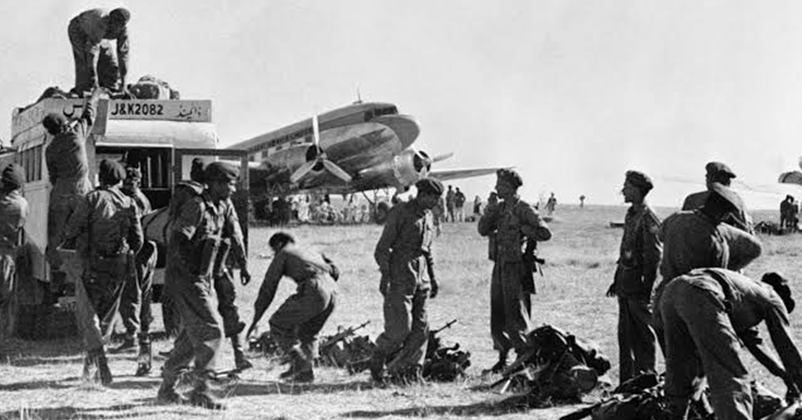
The situation then was critical in the extreme. The large raider- horde was being held by only two platoons of State troops who had dug themselves in on a high ground about 5 km east of Baramula. The handful of defenders were very hard pressed, and if they were overrun, the road to Srinagar would be open to the tribesmen The only reserve, or garrison, avarlable at Srinagar was a squadron of horsed cavalry. So Lieut-Colonel Rai decided to send forward his sole company of troops immediately to reinforce the two platoons of the State forces This was accomplished by 1200 hours on 27 October About the same time he signalled back to Delhi, " • 500 enemy and 2000 locals near Baramula cannot be held by State forces, so will undertake task I and reinforce State troops to prevent break-through. Build up must be expedited " At 1500 hours the same day 1e 27 October, another message was received atDelhi saying that Baramula had defintely fallen and was in flames In all only some 700 men of the State forces were available, and at least two companies of Indian troops were urgently required to patrol north and south of the main road in order to prevent the enemy from by-passing the Sikh positions during the hours of darkness . There was hope of some delay in the enemy advance for the tribal raiders were just then busy looting Baramula But unless 1 Sikh was made up to full strength by the afternoon of 28 October, Rai was not confident of being able to save Srinagar. Soon after this message, another was received from Brigadier Hira Lal Atal, who had been sent as Liaison Officer with the State government, but without any operational control over the Indian troops Atal reported that the civil administration had ceased to exist, refugees were thronging the airport and that at least one brigade would be required for the defence of the Valley.
In reply to his messages, Lieut-Colonel Rai was informed at 2305 hours on 27 October that air strafing would be carried out on 28 October, and the Brigade Tactical Headquarters and one extra battalion would be flown to Srinagar on 29-30 October, followed by another battalion by air if possible, else, by road.
At the same time, on 27 October, Delhi and East Punjab Command was ordered to establish a proper line of communication from Pathankot to Jammu as soon as possible. There was then only a fair weather motor road between the two places, and all traffic on it had to be ferried across the Ravi. There were only two boats available at the ferry which could transport about one battalion and 30 jeeps across the river per day But the Engineer-in-Chief reported that the Ravi could be bridged at Kathua by one 55-metre Bailey bridge, which could be put up earliest by 7 November.
The defenders of Srinagar passed the night of 27/28 October in vigilance in their hastily dug positions east of Baramula But no attack developed that night. The next morning, Rai himself went forward to the front line trenches with two more companies of 1 Sikh. He even contemplated attacking Baramula and throwing out the raiders in short order But soon after his arrival, the enemy began a big attack in order to push through and reach Srinagar. Bitter fighting took place and the attackers were held, but after some hours it struck them that the small defensive position could easily be out-flanked. When the enemy began to encircle his position, Rai went back and selected another defensive position 8km nearer to Srinagar. After this reconnaissance, he returned to his men and ordered them to withdraw to the new positions. Quietly and skilfully the men fell back While seeing off the last of the rearguard, Lieut-Colonel Rai was hit in the head by astray bullet and fell Death was almost instantaneous.
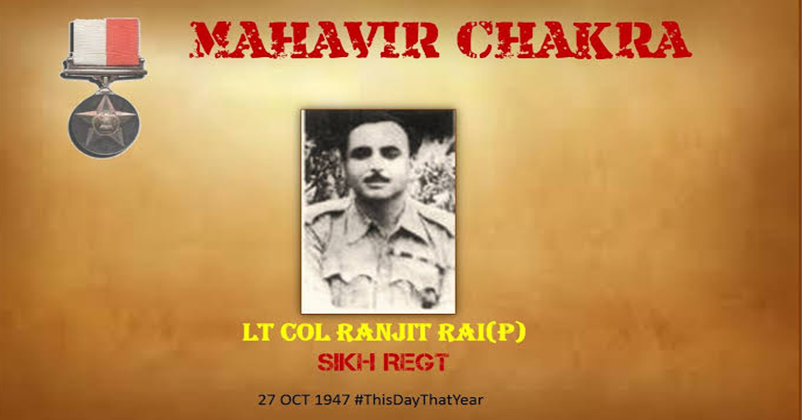
Thus fell a gallant son of India, in defence of freedom and of the weak Lieut-Colonel D.R Rai was given posthumously the award of Maha Vir Chakra.
The Critical days of the build up
The same day that Lieut-Colonel Rai was killed in Kashmir, the Army Headquarters in India took in hand preparations for a large-scale campaign. By then it had become clear that the threat to the Jammu and Kashmir State was grave and powerful, and that the Indian Army must throw its full weight into the fighting before the invaders would be driven out.
Delhi and East Punjab Command was therefore ordered on 28 October to carry out Phase I of Operation 'Jak', according ot the first phase of which 1 Sikh had been landed at Srinagar the previous day. Phase I involved the immediate despatch of one Brigade Group to Jammu via the Pathankot road At the same time, Delhi and East Punjab Command was also ordered to send one Brigade Headquarters (Headquarters 161 Indian Infantry Brigade), a signal section, one infantry battalion, and one platoon of medium machine guns to Srinagar. These reinforcements were to be despatched by air on 29 October and 30 October, so that the Srinagar contingent might be brought up to the strength of one brigade as soon as possible.
Moreover, urgent messages were flashed across that day to all the military Commands in India, asking them to report immediately what troops they could make available for the Kashmir operations. The next day, 29 October, the Eastern Command and Southern Command reported on the troops they could immediately spare and troops' trains soon began rolling up towards Delhi and Pathankot. Simultaneously, East Punjab Area was told to move two troops of armoured cars and one battalion out of the 50 Para Brigade to Srinagar as early as possible. The Ravi crossing was to be ready for them by the night of 1/2 November, and the armoured cars, of the 7Cavalry, were to carry with them their rations and petrol for ten days and two first-line lifts of ammunition. As urgent messages continued to arrive from Brigadier Atal and others at Srinagar about the critical situation in the Valley and the need for immediate reinforcements and air sorties. on 03 October two fighter aircraft of the Royal Indian Air Force were detailed to operate from the Srinagar airstrip itself, in order to afford air support to the hard-pressed ground troops. Although the Srinagar Airstrip was totally lacking in all the modern facilities for combat aviation, in the succeeding days a number of Harvards and Spitfires were based on that airfield and gave invaluable support to the infantry.
In the Valley, the situation remained critical on 28 October. One Viceroy's Commissioned Officer and five men had been killed and fifteen men wounded that morning when Colonel Rai died. The troops, 1Sikh less two companies, therefore, withdrew some distance, together with the remnants of the State forces, now totalling only about 60 men. The city of Srinagar, although unaware of the exact gravity of the situation, was tense, and only the volunteers of the National Conference kept hopeless panic at bay by their brave parades with their assorted weapons and defiant slogans. The enemy was freely using artillery and mortars now, but for some unaccountable reason refrained from pressing home any major attack. The fly-in of more troops continued, but one Dakota with 21 men had to force-land near Jammu due to engine trouble . Another Dakota dropping supplies into Kotli was fired upon by the enemy from the surrounding hilltops. It was slightly damaged, but flew on to Delhi after completing its mission. Fighter planes of the Royal Indian Air Force carried out strafing sorties around the Baramula-Ur area at 1100 hours on 28 October, and destroyed a number of motor lorries.
Nothing serous happened during the night of 28/29 October.
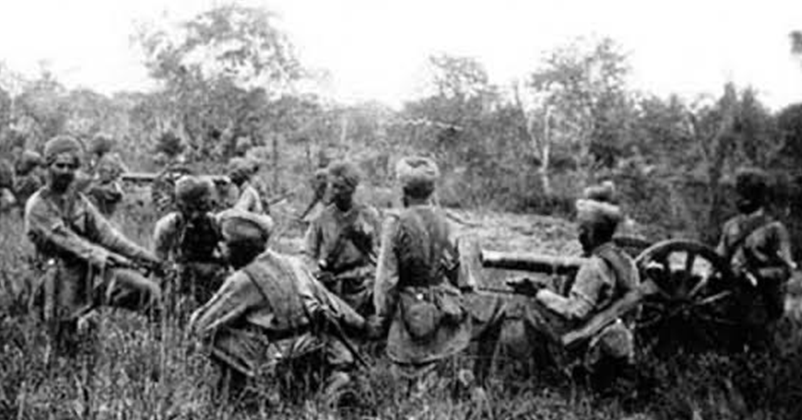
On 30 October, reports indicated greater numbers of the enemy in the Pattan area. There were about 200 lorries, and the men were estimated to total 1500-2000. During the night of 29/30 October, the enemy indulged in only some sniping of forward Indian positions, which however proved largely ineffective. But at 1900 hours on 30 October, one of the Indian convoys was ambushed at the bridge and suffered several casualties. The leading lorry of the three-lorry convoy had in it only a civilian driver, who was wounded. The second was carrying another civilian driver and five Kumaons. Out of this, three Kumaonis were killed and one Kumaoni and the driver were wounded. The third lorry also was fired at, but sustained no casualties. A fighting patrol of 1 (Para) Kumaon was immediately despatched to the area, but at 1930 hours it found that the enemy had already disappeared. Half-an-hour later, at 2000 hours the main position near Pattan was attacked by some 1000 raiders, who approached to within 5 metres of the defensive positions, but were then held up and thrown back. Their attack was supported by light machine guns and 3-inch mortars, but the deadly stream of bullets from the Indian medium machine guns proved too much for them.
On 31 October, no major engagement took place in the Valley.
On 1 November 1947, 184 men of 1 Sikh and 81,038 kg of supplies were transported by air to Srinagar. Colonel Harbakhsh Singh reached Srinagar that day and took over the command of 161 Brigade The fighting during the day was fitful, but bitter. At 0830 hours, a patrol of 1Sikh was ambushed The Sikhs were surprised, but quickly fell in, and the fight lasted about four hours. At the end, they came through with advantage, having lost five men killed and one wounded, but after killing 21 raiders, wounding five and capturing one Another patrol, of 1(Para) Kumaon, had a-slight brush with the enemy about 500 metres north of their position during which two raiders were killed and one local Kashmiri captured. Between 1300 and 1500 hours on 1 November, a fairly heavy attack was launched by the raiders against the 1 Sikh position, but was repulsed without difficulty Patrols of 1 (Para) Kumaon went towards Gandarbal and Sumbal, but could discover no enemy in the area.
Brigadier LP Sen arrived at Srinagar on 2 November and took over the command of 161 Brigade from Col Harbakhsh Singh, who became his Deputy Brigade Commander On that day the Kashmir front was on the whole quiet.
On 3 November a bitter battle took place near the Srinagar airfield itself. That morning one company of 1 (Para) Kumaon and two companies of 4 Kumaon went to reconnoitre the Badgam area. The company of 1(Para) Kumaon took up positions on a-ridge near Badgam while one company of 4 Kumaon returned towards Srinagar at 1230 hours. The other company of 4 Kumaon was suddenly attacked by about 700 raiders at 1400 hours at a point just north of Badgam. Taken by surprise and greatly outnumbered the company fought bravely but suffered heavy casualties. The raiders were apparently trying to sneak in and capture the Srinagar airfield itself. When their presence was discovered they naturally tried their best to overwhelm the single company of 4 Kumaon with repeated and desperate attacks. On receiving information 161 Brigade immediately sent one company of 1(Para) Kumaon with spare ammunition to help the defenders. Seven air strikes were also launched at the same time to hold up the raiders' attacks. These air attacks had a very salutary effect and succeeded in killing a large number of the raiders, but the company of 1 (Para) Kumaon sent as reinforcement did not succeed in throwing the enemy back. At the end of the battle the Indian casualties were 15 killed, including Major Somnath Sharma, and 26 men wounded. One of the ammunition trucks was also looted by the enemy, but the enemy attacks
were at last held, their surreptitious advance on the airfield was stopped and they suffered several hundred casualties by bombing and strafing from the air and in the hand-to-hand fight. Major Somnath Sharma was posthumously awarded the Param Vir Chakra for his gallant action. Before his death, Major Somnath Sharma had sent the following memorable message to his Brigade Headquarters-"The enemy are only 50 yards from us. We are heavily outnumbered We are under devastating fire I shall not withdraw an inch but will fight to the last man and the last round ".
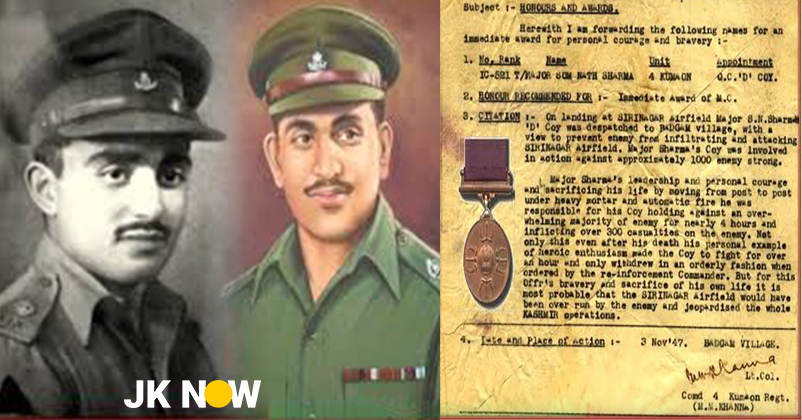
The same day, 3 November, news was received from the Pakistan Army that on 31 October a coup d'etat had taken place at Gilgit as a result of which the representatives of the State's lawful government there had been overthrown and the area had passed under the control of the so-called Azad Kashmir government.
The news of the Badgam battle so near the Srinagar airfield and the heavy casualties sustained in that battle brought home to everybody the gravity of the situation in Kashmir. The next day, 4 November 1947, Sardar Patel, the Deputy Prime Minister, and Sardar Baldev Singh, the Defence Minister, flew down to Srinagar to observe things on the spot and to study the situation. They returned the same evening to Delhi and apparently impressed on the Cabinet the need for further urgent reinforcements in Srinagar. The same morning at 0600 hours a squadron of armoured cars of the 7 Cavalry left Jammu for Srinagar along the tortuous 320-km hill road and over the 2,750 metres Banihal Pass. It was obvious by then that the operations in Kashmir were not in the nature of a minor action against civil commotion or an ill-armed rabble, but must result in fairly heavy and prolonged fighting over an extensive area Army Headquarters, therefore, asked Delhi and East Punjab Command that day to submit promptly an appreciation of the likely course of operations, estimates of the enemy forces, number and types of own troops required and the problems of their supply and maintenance during the winter months in case the operations continued until the spring of 1948.
On 5 November Maj-Gen Kalwant Singh reached Srinagar by air and assumed command of the J&K Div. About 400 men of the 6 Raj Rif were flown to Srinagar the same day. On the ground a patrol of 1Sikh clashed with a party of the invaders near Trikulbal about 3 km north-cast of Pattan and about 2 km north-west of Srinagar. In the fighting that ensued 18 raiders were killed and 3 of their vehicles captured.
On 6 November Army Headquarters (India) ordered Delhi and East Punjab Command that the Kashmir Valley was to be held at all costs and close liaison was to be maintained between the Indian Commander and Sheikh Abdullah, who had been appointed the Administrator of Kashmir. Any incident of communal nature was to be severely repressed and all help was to be given to the Kashmir Home Guards including rifles and facilities for training.
By the evening of 6 November the critical days for Srinagar were over. The raiders had lost the initiative because of their looting propensities displayed at Baramula. About 3500 men of the Indian Army had by then reached Srinagar and had thrown a ring of machine guns and bayonets around Srinagar and the airfield. Although the raiders were only about 8 km away from the city at the nearest point, it was now impossible for them to pierce through the positions of the defenders and capture the glittering prize almost within their grasp. On the other hand the Indian troops had recoiled adroitly before the full
force of the enemy blow could reach them and had by now consolidated the position. Reinforcements including field guns and armoured cars had reached them in sufficient numbers The liberation of the Valley was about to begin.
Liberation of the Valley
The Government of India was keen to have the raiders driven out of the Kashmir Valley as early as possible. The Defence Committee of the Cabinet on 4 November 1947 discussed the situation and issued verbal orders to Maj-Gen Kalwant Singh to recapture Baramula by 15 November 1947 even if the Indian Army had to incur 500 casualties in doing so.
By nightfall on 6 November, most of the troops were in position. Two companies of 1Sikh, one company of 4Kumaon, a few guns of 32 Field Battery and one troop of armoured cars of 7 Cavalry were holding the enemy near Shalateng. The remainder of 1 Sikh and of 4 Kumaon, together with the rest of B squadron 7Cavalry and Headquarters 161 Brigade were located near the airfield and the southern approaches to Srinagar.
Brig Sen planned to open a decisive battle around 10 November. By that date, he expected further reinforcements of infantry, artillery and armoured cars to reach him from Jammu. Early on 7November, he despatched one troop of two armoured cars and one Rifle troop of 7 Cavalry on a long reconnaissance via Gandarbal towards Bandipur north of the Wular Lake. Soon, thereafter, however, the thousands of raiders massed near Shalateng started firing at the 1Sikh positions. The firing soon intensified, and it was clear that they were going to launch a major attack. Brig Sen made plan on the spur of the moment, and ordered Lt Noel David, the 7 Cav column commander, to turn left at Krahom after Gandarbal, and bring his two armoured cars and the Rifle troop behind the raiders via Sumbal. This was accomplished, the armoured cars barely managing to inch their way across a narrow wooden bridge near Krahom. At the same time, a Harvard aircraft sent on a recce reported thousands of raiders collected near Shalateng, with several hundred lorries parked nearby, ready to move on to Srinagar. 1 (Para) Kumaon positioned behind 1 Sikh was then ordered to move quickly and quietly to the left and get ready to attack the right flank of the enemy.
As soon as the 7 Cavalry troops and 1 (Para) Kumaon were in position, Brig Sen, at about noon, ordered the attack to go in And all hell broke loose.
Murderous fire poured into the massed ranks of the raiders from three sides The RIAF strafed them from the air. The Kumaonis assaulted with their bayonets flashing Totally astounded, the raiders ran here and there in terror, and hundreds fell to the concentrated fire. Within twenty minutes, the battle was over, and the enemy started fleeing desperately along the road to Baramula, leaving behind their lorries, dumps of ammunition and supples. Zainkut ridge was captured by 1(Para) Kumaon about 1700 hours, and a-company of 1Sikh was immediately pushed through from Shalateng in civilian buses. The raiders' rout was complete, and they fled back in panic, leaving about 500 of their force dead on the ground.
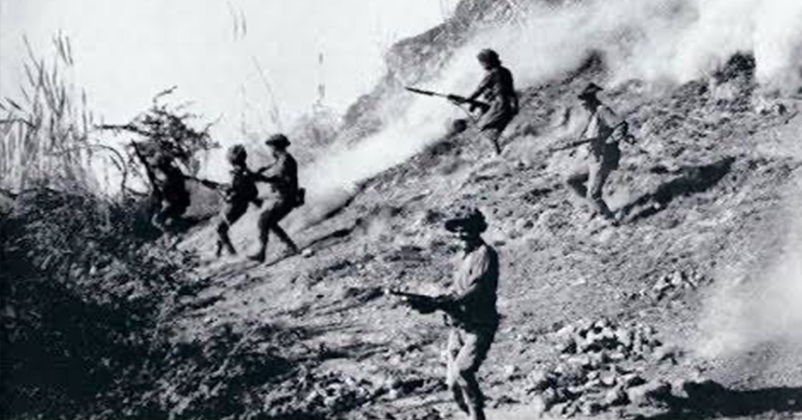
The raiders' headquarters, located in an orchard on the roadside near MS7, was hastily evacuated, and the advancing Indian force captured a 3-inch mortar, an MMG and a truck full of medical supplies. It was a decisive victory, for the loss of only one killed and two wounded among the Indian troops . The brilliant battle of Shalateng put Srinagar and the Kashmir Valley beyond the grasp of the raiders for ever. Pursuing the fleeing enemy the Indian troops recaptured Pattan the same day at1830 hours. But then the lack of petrol and the unsatisfactory condition of the transport vehicles held up the advance for a vital twelve hours. With daylight on 8 November the Indian troops surged forward again and reached milestone 31 at 1330 hours. Moving up just behind the forward troops Tactical Headquarters 161 Brigade established itself at Pattan. By 1600 hours Baramula was captured. By that evening (8 November) Brig L P Sen with Head- quarters 161 Brigade, 1 Sikh and 1 (Para) Kumaon were at Baramula, and 1/2 Punjab at Pattan. The troops required for the defence of Srinagar were set apart that day as " Sri Force" formed of 4 Kumaon, 6 Rajputana Rifles and one company 2 Dogra under Col Harbakhsh Singh Major-General Kalwant Singh and his men received congratula- tions from General Bucher on 8 November for their brilliant exploits in throwing the raiders back.
The threat to Srinagar was driven back finally on 8 November But information was received that day that some tribal bands had infiltrated into the Shupiyan area in Kulgam district 32 km west of Anantnag. This could result in serious setback for the Indian troops because tracks led from Shupiyan to Banihal and Ramban, and destruction of either the Bainhal tunnel or the Ramban bridge could destroy the land line of communication from Jammu to Srinagar for many weeks. As a precautionary measure therefore one company less one platoon of 3 (Para) Rajput was sent to Ramban from Jammu to defend the bridge and to patrol towards Banihal, and a squadron of the J&K Body Guard Cavalry was sent from Srinagar to Shupiyan
.
On 9 November the Indian troops were engaged in mopping up the Baramula area and consolidating their positions on the high ground west of the town and astride the road. The Royal Indian Air Force flew four Tempest sorties that day from Amritsar over Baramula-Uri and Kotli-Rawalkot areas. A despatch rider, several lorries and a bridge of boats near Muzaffarabad were hit, the last one by rockets from the Tempests 250-Ib bombs were also being used now by the Royal Indian Air Force.